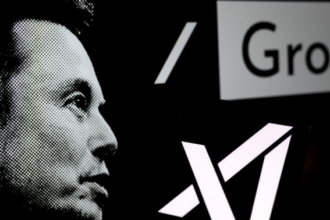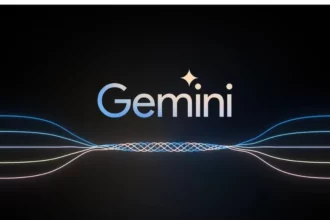Table of Contents
ToggleA Bunch of Useful AI Prompts For Filmmakers
AI prompts provide filmmakers with powerful tools to boost creativity, streamline production, and enhance storytelling across every stage of filmmaking. These prompts assist in idea generation, character building, scriptwriting, production planning, on-set problem solving, post-production polish, and marketing strategies. AI’s practical applications help filmmakers maintain budgets, meet deadlines, and bring their visions to life.
Development & Ideation: Planting the Creative Seed
The first step in creating any film is developing the story concept. AI prompts help overcome writer’s block by generating original ideas and structured narratives.
- Generate five unique loglines for a science fiction film exploring themes like memory as currency or artificial consciousness.
- Create high-concept ideas combining genres, such as Western-horror or romantic comedy with time travel.
- Brainstorm short films centered on themes like ‘second chances’ in various tones: heartwarming, thrilling, melancholic.
- Develop detailed character profiles detailing backgrounds, motivations, fears, and quirks.
- Outline three-act structures or plot twists, especially for mystery or psychological thrillers.
Pre-Production: Building the Blueprint
Once the story is set, AI assists in translating concepts into scripts, storyboards, and production plans.
- Write opening screenplay scenes based on custom loglines to establish tone and introduce characters.
- Generate dialogue or non-verbal scenes that convey tension, conflict, or exposition naturally.
- Create visual style guides including color palettes, lighting, and costume suggestions matching aesthetics like neo-noir or Wes Anderson-inspired looks.
- Produce shot lists and casting call descriptions to target desired actor qualities and locations.
- Suggest essential props for specific settings such as a 1920s speakeasy or futuristic laboratory.
Production: Capturing the Vision
During filming, AI supports creative decisions and practical adjustments on set.
- Propose lighting setups that create suspenseful, romantic, or sterile moods.
- Suggest camera movements enhancing emotional impact during reveals or confrontations.
- Generate Foley sound effects tailored to scenes like sword fights or rainstorms for authentic soundscapes.
- Rephrase dialogue lines to better fit an actor’s emotional state or character’s personality.
Post-Production: Assembling the Puzzle
Editing, sound design, visual effects, and color grading benefit from AI’s refined suggestions.
- Recommend pacing and rhythm for different scenes—from fast-paced chases to slow suspenseful moments.
- Generate visual effect ideas enhancing magical elements or futuristic technology scenes.
- Create color grading presets to evoke nostalgic, gritty, or futuristic moods.
- Suggest soundtrack elements or playlists that match the tone of the film.
Marketing & Distribution: Reaching the Audience
Marketing requires compelling communication; AI helps craft tailored materials.
- Write multiple trailer scripts targeting different audiences emphasizing action, romance, or mystery themes.
- Generate eye-catching poster taglines that highlight the film’s core plot and tone.
- Create social media content calendars with daily posting schedules for Instagram, TikTok, and Twitter.
- Produce press releases announcing premieres while underscoring key selling points.
Key Benefits of AI Prompts for Filmmakers
- Save time and reduce costs by automating ideation and planning steps.
- Enhance creativity with fresh story ideas and character development tools.
- Improve scriptwriting quality through dialogue refinement and scene structuring.
- Streamline production with shot lists, lighting, and sound effect suggestions.
- Elevate post-production with editing pace advice and specialized visual effects concepts.
- Boost marketing efforts with tailored content and audience targeting strategies.
AI acts as an accessible, democratizing tool that empowers filmmakers—especially independents and shorts creators—to solve creative challenges and manage resources efficiently. A familiarity with these AI prompts unlocks new possibilities in film production and storytelling.
A Bunch of Useful AI Prompts For Filmmakers: Unlock Your Creative Power Today
Filmmaking is as thrilling as it is challenging—and AI is quickly becoming the ultimate sidekick on set. Hollywood buzzes about it, indie creators embrace it, and everyone wonders: “How *exactly* can AI help me make a better film, faster, and maybe save a dime or two?” This blog dives deep into a variety of useful AI prompts designed specifically for filmmakers. It’s your one-stop-shop to jumpstart ideas, sharpen scripts, plan shoots, polish edits, and promote your masterpiece.
Ready to wield the power of AI? Grab your metaphorical director’s megaphone, and let’s get to work!
Welcome to AI-Enhanced Filmmaking: The New Hollywood Secret
AI isn’t some futuristic gimmick anymore—it’s here, bright-eyed and bursting with ideas. Whether you’re crafting a heartfelt short or navigating your first indie feature, AI chips away at the tedious parts so you can focus on what matters: *telling your story*. Consider AI your creative co-pilot, saving time and money, and sparking fresh ideas that might have otherwise been buried under writer’s block.
Today’s article offers a treasure trove of AI prompts sourced from real users, tested by filmmakers who push the boundaries of narrative and production. Some prompts are exhilarating, others practical magic. All help you harness AI’s potential at every stage of your project.
Planting the Creative Seed: Using AI to Develop Ideas and Characters
Every film begins with a spark. The blank page can intimidate even the most seasoned directors and writers. This is where AI really earns its stripes. It trumps the dread of a blank screen by generating story concepts, character details, and fresh plot twists instantly.
Imagine asking your AI partner: “Generate five original loglines for a sci-fi film exploring memory as a commodity.” Instantly, you get intriguing, creative ideas that can kickstart your narrative. Or try combining genres. Fancy a horror-Western mashup? Challenge your AI: “Create high-concept film ideas blending Western and horror.” It offers you unique blends and unexpected angles.
Character development gets a facelift too. Struggling to shape a protagonist’s backstory? Prompt AI to “Create a detailed profile for an ambitious young chef, including motivations and quirks.” Suddenly, your character feels alive, layered, and ready to step off the page.
Tip: Use AI to brainstorm “what if” scenarios for documentaries. For example, “What if a small town’s main employer manufactured dreams?” The results might surprise you!
For structuring your story, AI can outline the classic three-act format, suggest compelling plot twists, or build timelines for historical dramas. This tight planning keeps your narrative focused and engaging.
Building the Blueprint: AI-Assisted Pre-Production
With your idea polished, it’s time to translate vision into action. Screenwriting, storyboarding, and production planning can be time-consuming and technical. AI eases that burden with a treasure trove of prompts.
- Writing a screenplay’s opening scene? Command your AI: “Write the opening scene based on this logline: [insert logline here].” Instantly, you get a draft to spark your creativity or share with your team.
- Need dialogue? Try: “Generate a conversation between two characters with opposing views on justice.” It produces nuanced back-and-forth that feels real and layered.
Storyboarding becomes more vivid with AI prompts that specify shot types and camera angles. Want a high-octane car chase? Ask for a storyboard sequence that details wide shots and dolly zooms. For visual style, AI can craft aesthetic guides suggesting color palettes inspired by neo-noir or Wes Anderson-like whimsy.
Production planning also gains efficiency. List potential filming locations tailored to your story’s setting or suggest props essential to a scene set in a 1920s speakeasy. These AI insights help streamline logistics, reducing costly surprises on set.
Capturing the Vision: AI’s Role on Set
Filming is a whirlwind of moving parts. Maintaining creative focus is essential—and that’s where AI lends a hand.
Lighting a romantic scene? Get three alternative setups from AI that shift mood with color and intensity. Want to enhance emotional punch? Request a different camera movement suggestion to elevate a confrontation or reveal.
Sound designers, your pal’s here too. AI can conjure detailed Foley lists: clashing swords, a dense rainstorm, or bustling market chatter—perfect for spot-on soundscapes.
If an actor stumbles over a line, AI can rephrase dialogue to sound natural for any mood—from betrayal to joy—helping performances shine without losing meaning.
Post-Production: Polishing With AI Precision
Editing, scoring, and visual effects make a film sing. AI enhances these areas by suggesting pacing rhythms tailored to scene types, ideas for magical visual effects, and color grading presets that evoke desired tones—be it nostalgic warmth or gritty realism.
Need a killer title sequence idea? AI generates thematic visuals that hint at your film’s core message.
On the audio front, AI identifies fitting musical scores: intense and thrilling for chase scenes, whimsically charming for lighthearted cuts. It also lists sound design elements that build suspense or unease in horror projects and curates playlists of existing tracks aligned with your film’s vibe.
The Final Act: Marketing and Distribution With AI
The world won’t watch your masterpiece unless they know about it. Here, AI becomes your marketing strategist.
- Craft three varied movie trailer scripts tailored to different audiences—action lovers, romantics, mystery buffs. AI adapts tone and focus accordingly.
- Generate catchy poster taglines that sum up your plot in memorable phrases.
- Plan a robust social media calendar with daily posts across Instagram, Twitter, TikTok, keeping audiences hooked from teaser to premiere.
- Write punchy press releases highlighting your film’s unique appeal to grab media attention fast.
Why Choose AI Prompts? Practical Benefits for Filmmakers
Here’s the deal: filmmaking is complex and costly. AI simplifies parts of the process without sacrificing creativity.
- Speed: Generate scripts, concepts, and plans faster than waiting for inspiration or meetings.
- Budget-friendly: Avoid expensive rewrites or site scouting by pre-visualizing ideas with AI.
- Unconventional Creativity: Get unexpected genre blends or plot twists you might never have considered.
- Consistency: Ensure your story beats and tones remain coherent across sprawling projects.
- Accessibility: AI democratizes filmmaking. You don’t need a big studio budget to access powerful creative tools.
For example, a filmmaker struggling to find new characters for their psychological thriller might prompt: “Develop a complex antagonist with a sympathetic motivation and a core philosophy.” The AI responds with a layered villain whose drive is heartbreaking as well as terrifying. Suddenly, the narrative stakes soar.
Personal Experience: AI in Action
A friend of mine, an indie filmmaker, swore by AI for their recent short film. Facing a tight schedule, they used AI to draft a three-act outline and a storyboard for a dystopian story set in a world ruled by children. The prompts saved countless brainstorming hours and revealed plot angles they hadn’t seen.
Their on-set sound designer tapped AI to list authentic rainstorm and market sounds—ending with a lush soundscape that made the film feel polished and professional. In post, AI’s color grading suggestions added a gritty feel conveying the story’s mood perfectly.
The end result? The short premiered at a festival and garnered praise for its cohesive storytelling and immersive atmosphere, all while sticking to a shoestring budget.
Final Words: Embrace AI, But Keep Your Creative Finger on the Pulse
AI doesn’t replace the artist. It extends the creative toolkit. You don’t have to use it, but knowing how others do unlocks new ways to get ahead. Whether it’s beating writer’s block, planning a shoot, or polishing your edit, AI prompts are the Swiss Army knife of modern filmmaking.
So next time you face a gnarly story problem, a fuzzy character, or a packed schedule, consider asking your AI assistant for help. You might just discover a shortcut to your creative passion project.
Ready to transform your filmmaking journey with AI prompts? Grab your laptop, open your favorite AI platform, and let the creative sparks fly!
What types of AI prompts help with developing unique film story ideas?
Prompts that ask AI to generate loglines, combine unusual genres, and explore ‘what if’ scenarios spark creativity. For example, creating sci-fi loglines on memory as currency or mixing Western and horror themes can uncover fresh concepts.
How can AI assist in creating detailed film characters?
AI can build character profiles, including backstory, motivations, and quirks. It also helps develop complex antagonists or write monologues revealing key plot points. This deepens character depth quickly.
What AI prompts are useful for planning a screenplay’s structure?
Prompts that outline three-act structures or suggest plot twists serve well. AI can create timelines, obstacles, and characterize story progression efficiently, especially for genres like mystery or historical drama.
In what ways can AI support pre-production visual planning?
AI can generate storyboard sequences with specific shot types and camera angles. It can also suggest visual style guides, production design details, and evolving costume concepts for characters.
How can AI improve the efficiency of on-set filmmaking?
AI offers alternative lighting setups, camera movements, and sound effect lists to enhance scene mood and realism. It helps maintain creative intent and solve last-minute production challenges.





